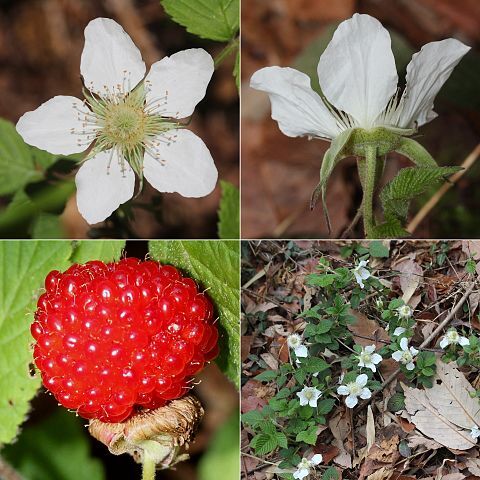Shrubs 1–2 m tall. Branchlets reddish brown or brown, terete, with soft hairs, stalked glands, and sparse, curved prickles. Leaves imparipinnate, 3–5-foliolate; petiole (0.5–)2–10 cm, petiolule of terminal leaflet to 2 cm, lateral leaflets shortly petiolulate, petiolule and rachis pubescent, with stalked glands and sparse prickles; stipules lanceolate or ovate-lanceolate, 6–10 × 2–3 mm, both surfaces pubescent, margin entire; blade of leaflets ovate or broadly ovate, 3–7 × 2–3.5 cm, both surfaces sparsely soft hairy, base broadly cuneate to rounded, margin irregularly sharply doubly serrate, apex acute, acuminate, or caudate. Inflorescences terminal or axillary, often 1-flowered; bracts lanceolate or linear, 4–7 mm, pubescent. Pedicel (1.5–) 3–6 cm, pubescent, with stalked glands, or with few small needle-like prickles. Flowers 3–4 cm in diam. Calyx abaxially with dense soft hairs and stalked glands; sepals reflexed after anthesis, ovate-lanceolate or triangular-lanceolate, 1–1.5 cm × 4–5 mm, margin gray tomentose, apex long caudate. Petals white, obovate or suborbicular, 1.2–1.8 cm × 7–12 mm, glabrous, base clawed. Stamens numerous, much shorter than petals. Pistils shorter than stamens; style and ovary glabrous. Aggregate fruit subglobose, 1–2 cm in diam., glabrous. Fl. Apr, fr. May–Jun. 2n = 14.
More
A shrub. It grows 1-2 m tall. The branches are reddish-brown with soft hairs. There are a few curved prickles. The leaves have leaflets along the stalk and one at the end. Flowers usually occur singly and are 3-4 cm across. The petals are white. The fruit are aggregate and 1-2 cm across.
Thickets and waste ground in lowland and low mountains of C. and S. Japan. Slopes, roadsides, waste places, thickets and forested slopes; at elevations from 900-3,200 metres.
More
It is a subtropical plant. It grows on forested slopes between 900-3,200 m above sea level. In Yunnan.
Can be grown by cuttings or seedlings. Seeds needs stratification.

